Learn Data Governance & assess Data Maturity with IEC/ISO 38505 standards. Get trained now!
Data governance, data maturity, data strategy, data standards, data assessment, data management, data quality, data compliance, data policies, data stewardship, data architecture, data framework, data governance framework, data lifecycle, data security, data privacy, data regulations, data audit, data governance assessment, data governance training, data maturity assessment, data governance implementation, data governance plan, data governance best practices, data governance tools, data governance framework standards, data governance policies, data governance compliance, data governance framework implementation, data governance framework assessment, data governance framework best practices, data governance framework tools, data governance framework training, data governance framework policies, data governance framework regulations, data governance framework audit, data governance framework management. data goverance, data maturty, data stratagy, data stadards, data asessment, data managment, data qualty, data complience, data polices, data stewrdship, data archtecture, data framwork, data lifecyle, data secruity, data privay, data regualtions, data audti, data goverance asessment, data goverance traning, data maturty asessment, data goverance implimentation, data goverance plan, data goverance best practises, data goverance tools, data goverance framework stadards, data goverance polices, data goverance complience, data goverance framework implimentation, data goverance framework asessment, data goverance framework best practises, data goverance framework tools, data goverance framework traning, data goverance framework polices, data goverance framework regualtions, data goverance framework audti, data goverance framework managment.




